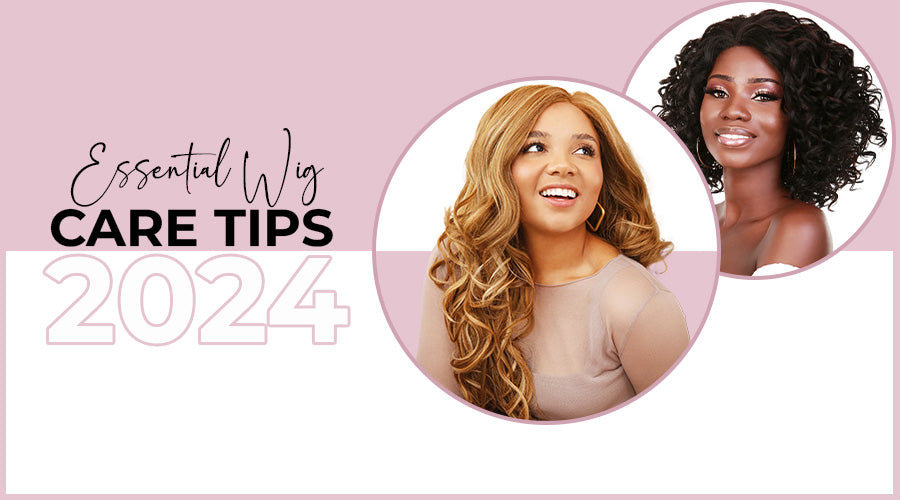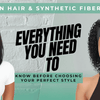Essential Wig Care Tips 2024

It’s time to unlock the secrets to salon-worthy wigs at home with our expert advice for 2024! Delve into essential wig care tips and techniques for achieving flawless results and keeping your wigs runway-ready!
Wigs have become an integral part of our life, whether for fashion, convenience, or medical reasons. Regardless of why you wear a wig, one thing is certain: proper care is essential to maintain its quality and style. In this comprehensive guide, we'll explore everything you need to know about caring for your wig, from daily maintenance routines to long-term wig care tips.
Understanding Your Wig
Before diving into wig care tips and techniques, it's important to understand the basics of your wig. Wigs come in various types, including synthetic, human hair, and blends, each with its own care requirements. Synthetic wigs, for instance, cannot withstand heat styling like human hair wigs can. Additionally, the materials used in construction, such as lace, wefts, and caps, play a role in how you care for your wig. Always refer to the manufacturer's instructions for specific care guidelines tailored to your wig.
Daily Maintenance Routine
A consistent daily maintenance routine is crucial for keeping your wig looking its best. The wig care tips begin by gently brushing your wig with a wide-tooth comb or wig brush to remove tangles and prevent matting. When not in use, store your wig on a wig stand or mannequin head to help maintain its shape and prevent creasing. Avoid leaving your wig in direct sunlight or near heat sources, as this can cause damage over time.
Washing and Conditioning
When someone asks for wig care tips, washing and conditioning is top priority. Regular washing is essential to remove buildup of oils, sweat, and styling products that can weigh down your wig and dull its appearance. Depending on how often you wear your wig, aim to wash it every 8-10 wears or as needed. Use a gentle shampoo formulated specifically for wigs, avoiding products containing sulfates or harsh chemicals that can strip the fibers. Follow up with a lightweight conditioner to keep the hair soft and manageable.
To wash your wig, fill a basin or sink with lukewarm water and add a small amount of wig shampoo. Gently swish the wig in the water, being careful not to rub or wring the hair. Rinse thoroughly with cool water to remove all traces of shampoo. Pat the wig dry with a towel to remove excess water, then allow it to air dry on a wig stand or towel-lined surface.
Drying Techniques
When it comes to drying your wig, there are two main methods: air-drying and blow-drying. Air-drying is the gentlest option and is recommended for most wig types. Simply place your washed wig on a wig stand or mannequin head and allow it to air dry naturally. Avoid wringing or twisting the wig, as this can cause damage to the fibers.
If you need wig care tips to speed up the drying process, you can use a blow dryer on a cool setting. Hold the dryer at least 6 inches away from the wig and use a wide-tooth comb or your fingers to gently detangle the hair as it dries. Avoid using heat styling tools on synthetic wigs, as they can cause melting or damage to the fibers.
Styling Tips and Tricks
Styling your wig allows you to create endless looks to suit your mood and personality. However, it's important to take precautions to avoid damaging the wig. If you have a human hair wig, you can use heat styling tools like curling irons and straighteners on a low heat setting. For synthetic wigs, opt for heat-friendly styling products designed specifically for synthetic hair.
When using styling products on your wig, less is often more. Start with a small amount and build up as needed to avoid weighing down the hair or causing buildup. Experiment with different styling techniques, such as braiding, twisting, or pinning, to create unique looks that showcase your personality.
Dealing with Specific Challenges
While proper care can help prevent many common wig issues, you may still encounter challenges along the way. Tangles and matting are common concerns, especially with longer wigs. To prevent tangling, always brush your wig before and after wearing it, and store it properly when not in use. If your wig does become tangled, use a detangling spray or conditioner to help loosen the knots before gently combing through the hair.
Frizz and static electricity can also be problematic, particularly in dry or humid conditions. To minimize frizz, avoid over-brushing your wig and use anti-frizz products sparingly. To reduce static, lightly mist the wig with water or a static-control spray, or rub a dryer sheet over the surface of the hair.
Long-Term Wig Care Tips
With proper care, your wig can last for months or even years. However, there may come a time when it's no longer looking its best and needs to be replaced. Signs that it's time for a new wig include excessive shedding, thinning or balding areas, or irreparable damage to the fibers. When storing your wig long-term, keep it in a cool, dry place away from direct sunlight and heat sources. Consider investing in a wig box or travel case to protect it from dust and debris.
Wig Care Tips on the Go
Traveling with a wig requires some extra planning to ensure it stays looking its best. Invest in a travel-friendly wig stand or collapsible mannequin head to keep your wig supported and protected while on the go. Pack a small supply of essential wig care products, such as shampoo, conditioner, and styling tools, in travel-sized containers to save space in your luggage. If you encounter any emergencies while traveling, such as tangled hair or a loose cap, don't panic—most issues can be easily fixed with a few simple tools and techniques.
Caring for your wig is essential to maintaining its quality and style. By following these wig care tips and techniques, you can keep your wig looking fabulous for months to come. Remember to establish a consistent maintenance routine, use the right products for your wig type, and address any challenges as they arise. With a little time and effort, you can enjoy a beautiful, long-lasting wig that helps you look and feel your best every day.
FAQ's
Q1: Can I use regular shampoo and conditioner on my wig?
It's best to use products specifically formulated for wigs to maintain their quality. Regular shampoo and conditioner may contain harsh ingredients that can damage synthetic fibers or strip moisture from .
Q2: How do I detangle my wig without causing damage?
Start by gently combing through the ends of the wig with a wide-tooth comb or wig brush, working your way up to the roots. For stubborn tangles, use a detangling spray or conditioner to help loosen them before combing.
Q3: My wig is shedding. Is this normal?
Some shedding is normal, especially with synthetic wigs. However, excessive shedding could be a sign of damage or wear. Make sure you're handling your wig gently and avoiding rough brushing or styling.
Q4: Can I dye or bleach my wig to change the color?
It's best to consult a professional wig stylist before attempting to dye or bleach your wig, especially if it's synthetic. Human hair wigs can be dyed or bleached, but it's important to use the proper products and techniques to avoid damage.
Q5: How do I know when it's time to replace my wig?
Signs that it may be time to replace your wig include excessive shedding, fraying or thinning of the fibers, and a loss of shape or style. If your wig no longer looks or feels natural, it's probably time for a new one.








